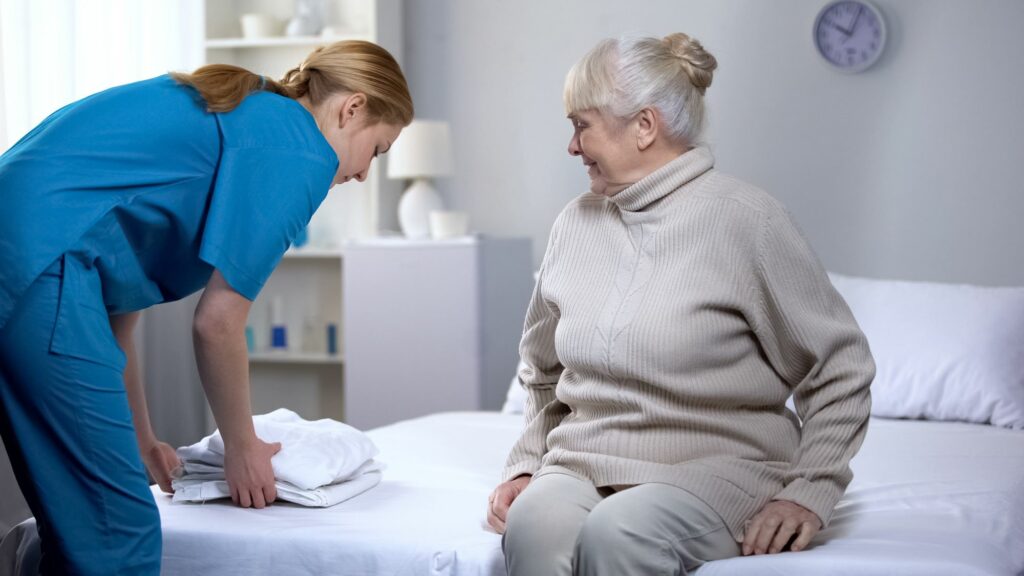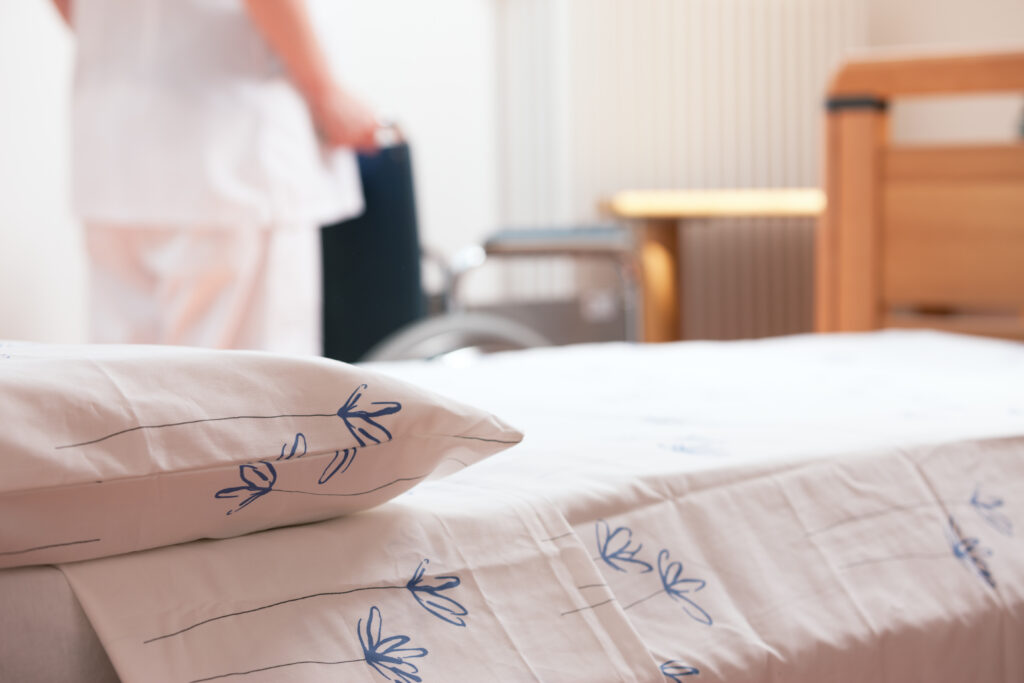With around 200,000 older Australians residents in aged care facilities across the country, aged care linen is a vital service in our ageing society.

Aged care linen is one of the biggest sources of work for commercial laundry services across the nation.
Given the number of elderly residents, that likely comes as no surprise. But what’s the point in using specific aged care linen?
Infection control in aged care services
Unfortunately, older adults often suffer from complex health issues, many of which are transmissible to other residents or aged care workers.
Residents in aged care facilities also tend to have weaker immune systems.
This creates a perfect storm in which infection is much more transmissible, and so infection control processes become critical to protect people who can’t fight off illness as easily as the rest of us.
In such a situation, using “regular” linen and ordinary washing just isn’t enough to minimise the risk of cross-infection.
When linen from an aged care facility isn’t properly handled and cleaned, it can become a means of spreading common illnesses that include influenza, norovirus, clostridium and more.

Finally, aged care linen tends to be more durable than your average bedsheets.
When going through such a rigorous cleaning process, linen needs to be able to stand up to the high temperatures and processing methods used, without falling apart.
Aged care linen tends to be more durable as a result.
How aged care linen should be handled
The Australian Government, together with the National Health and Medical Research Council (NHMRC), set out standards for how aged care linen should be handled.
Each healthcare facility is expected to have its own policies for proper linen handling, but the aforementioned organisations offer best practices in how to structure those policies.
While different facilities may have varying methods of handling and cleaning their aged care linen, every policy must follow standards set out in the AS/NZS 4146 regulations.
Advice from the government and NHMRC includes the following:
- Appropriate PPE (Personal Protective Equipment) should be worn whenever handling soiled linen, ensuring that the handler isn’t subjected to blood or bodily fluids
- Used and soiled linen should be bagged into appropriate, heavy-duty laundry bags, before being deposited in a designated receptacle
- Used linen should be processed/cleaned in a separate place to patient care areas, and it should never be cleaned in a domestic washing machine
- Following contact with used linen, thorough hand-washing procedures should be followed
- Fresh linen should be stored in a clean and dry area, away from the site where used linen is processed. This will avoid contamination from dust and moisture, vermin and soiled laundry

Choosing a laundry management service
When choosing a laundry management service to handle your aged care linen, the most important consideration is to ensure that the provider meets the aforementioned AS/NSZ 4146 regulations in their operations.
Choosing a reputable provider can have other benefits, as established laundry management services may offer additional services and products to improve residents’ lives and streamline the management of used linen.
This includes bed and chair pads, bed slide sheets, linen clothing protectors, waterproof bedding and more.
What is the point in ‘aged care linen’?
To sum up the titular question, aged care linen, and the proper handling of soiled or used aged care linen, is an essential step in infection control.
Among healthcare facility residents who have compromised immune systems or who are more prone to illness, it can be a major barrier preventing the transmission of infection among older adults and the staff who care for them.









